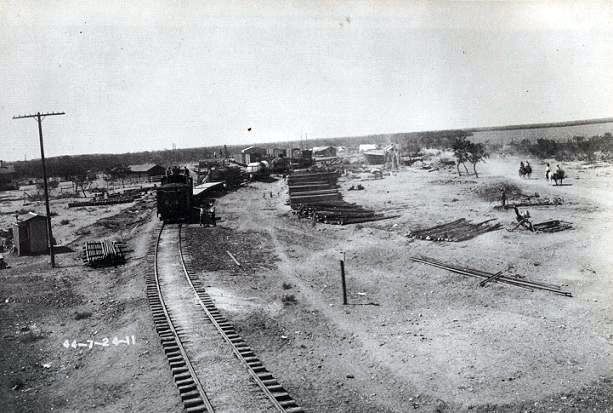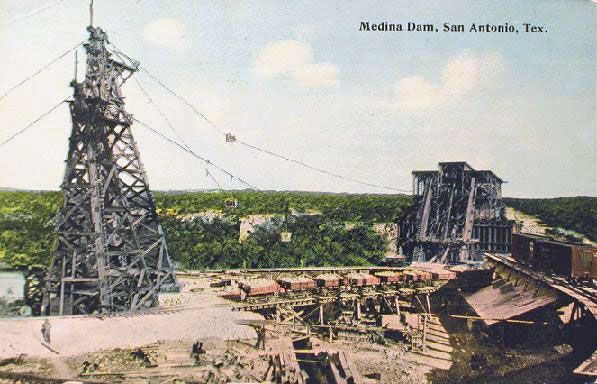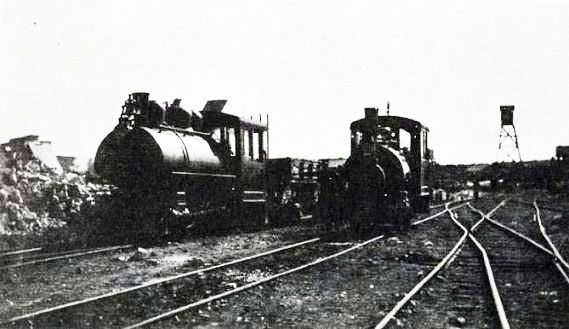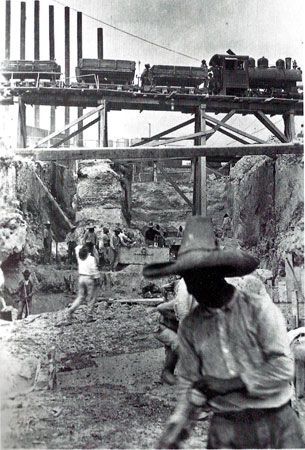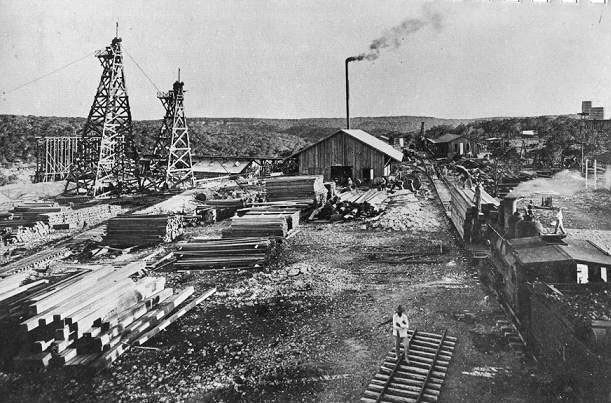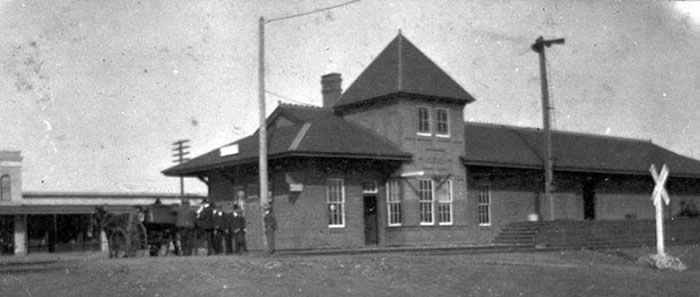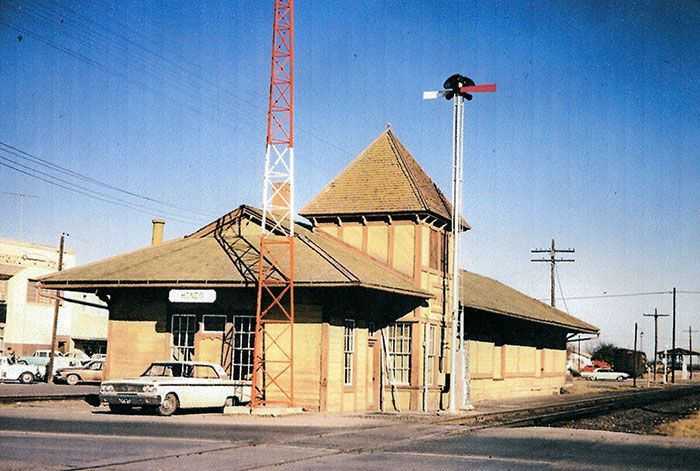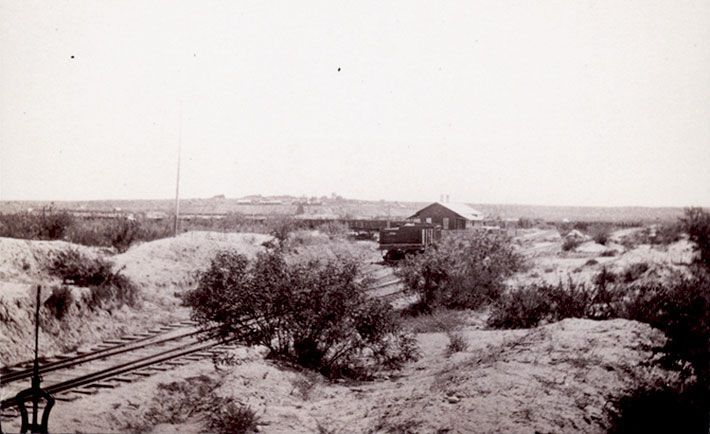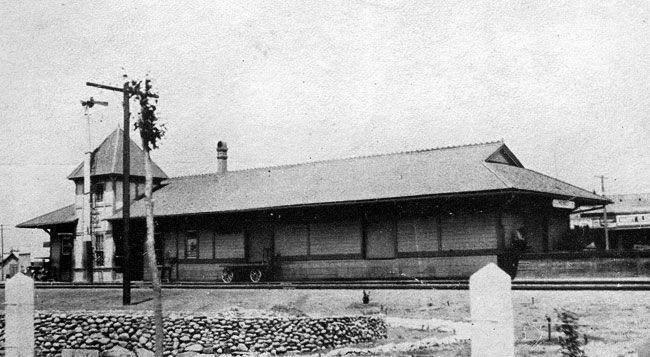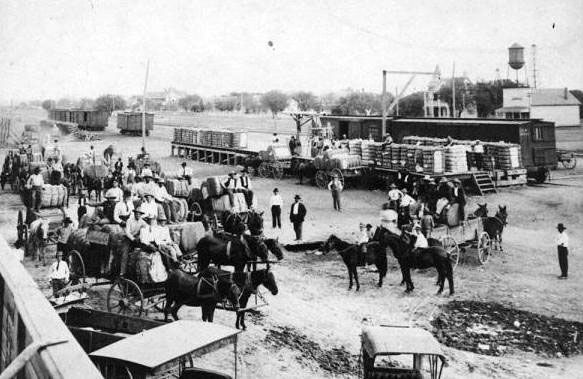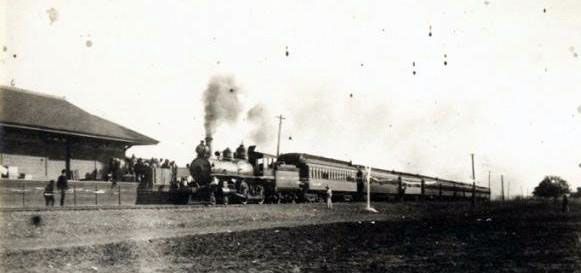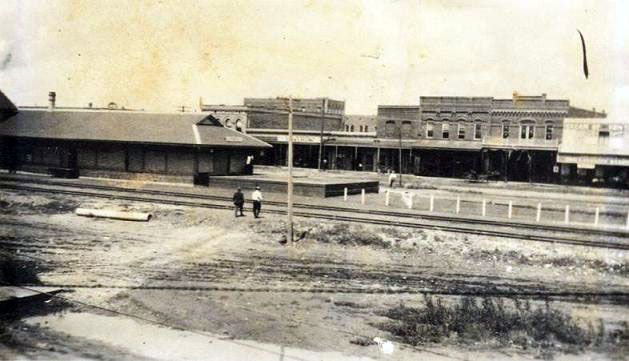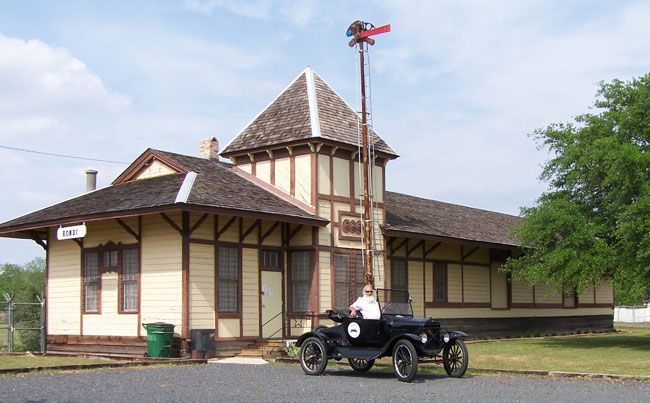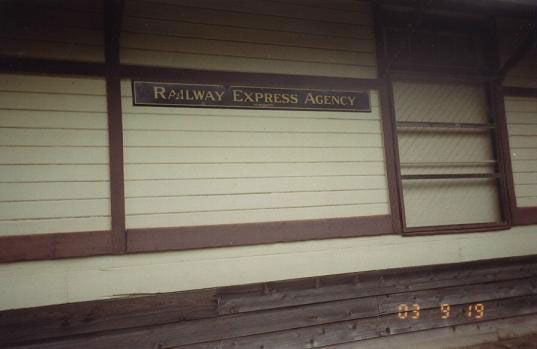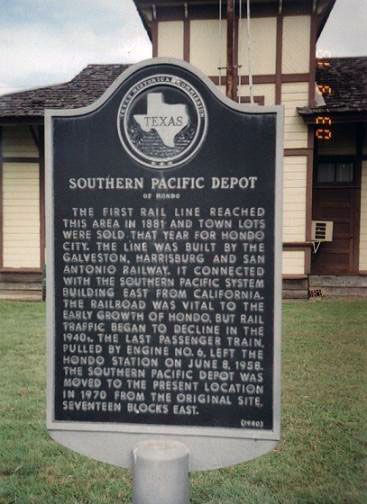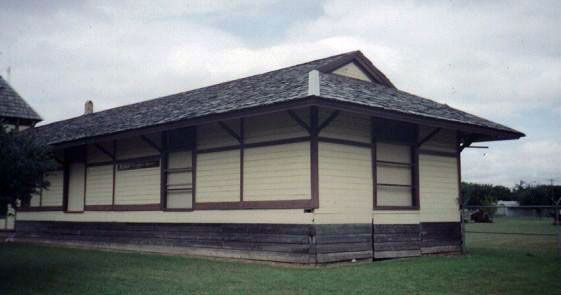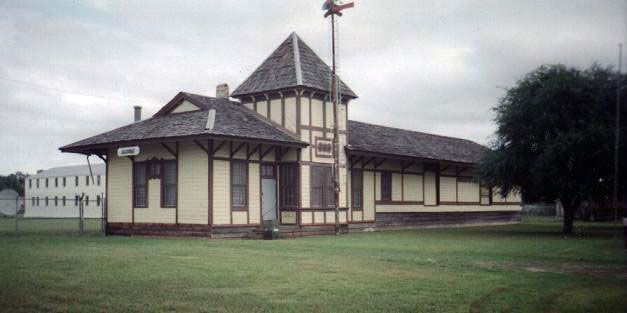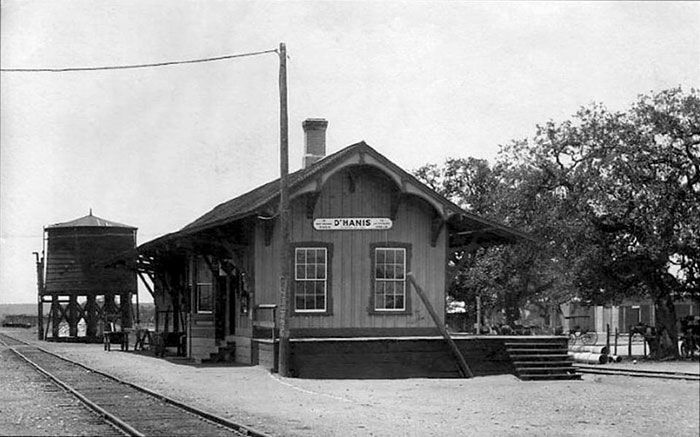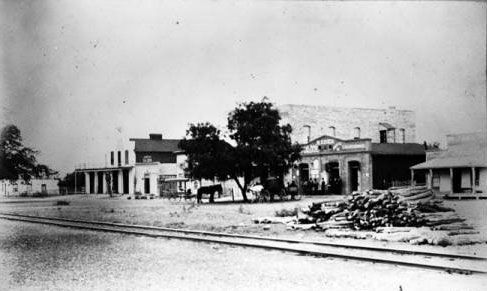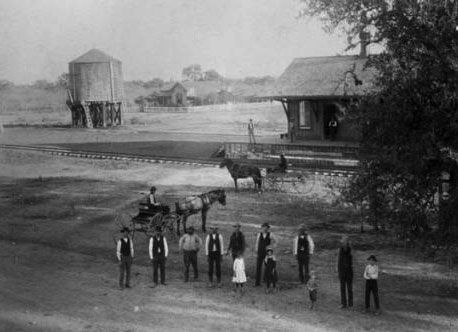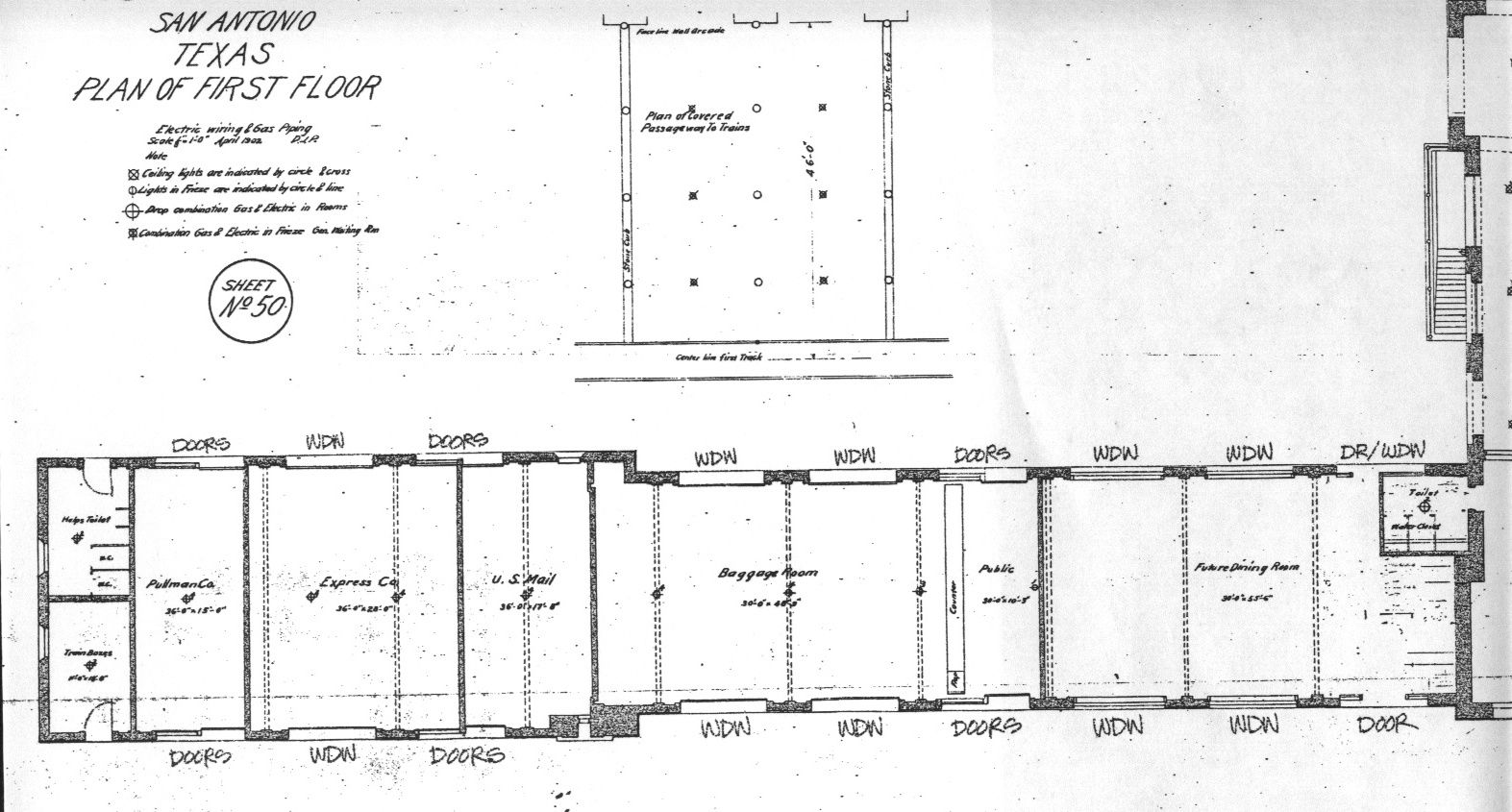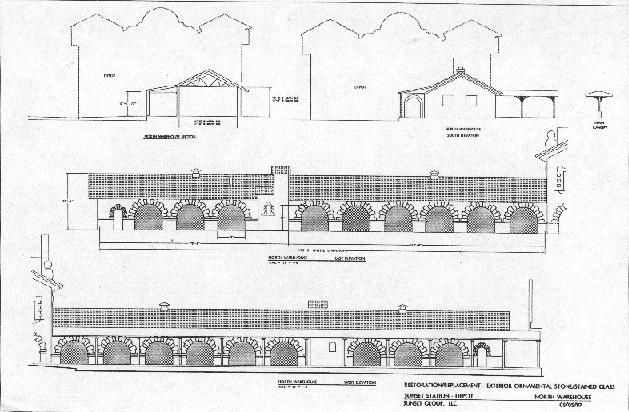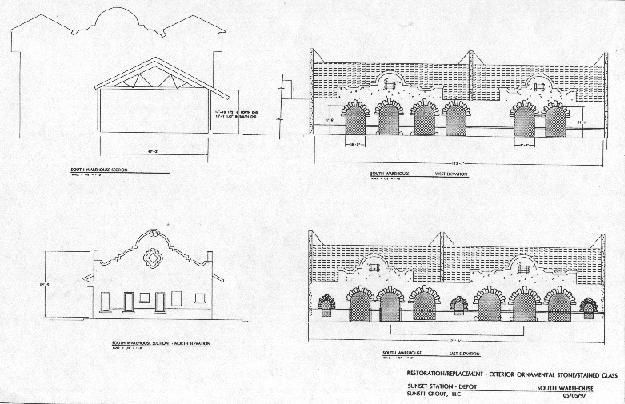The Railroad in Dunlay, Hondo and D'Hanis
Dunlay, Texas
Dunlay, in Medina County, is a small town west 39 miles west San Antonio, 14 miles on from Lacoste. It was created by the arrival of the railroad and is named after a G.H. & SA conductor, Jerry Dunlay. The main line crosses under HWY 90 at Dunlay and runs along it on the north side. This was the closest point on the line to where Medina lake would be built in 1911 and temporary tracks were constructed to bring in men and materials to the construction site. Two switchers were leased from the railroad to move the massive amounts of lumber and cement required for the project. An engineer named Pearson raised $6,000,000.00 from British investors to get the dam built. Work began in the spring of 1911 and was completed by the fall of 1912. Around 1,500 men were employed at the peak of construction which was heavy on human effort and light on machinery. Laborers were paid $2.00 a day, and 70 were killed before the dam was finished. In 1912 it was the biggest dam in Texas. In 1941 only one train a day in each direction stopped at Dunlay. Service ended in 1958. Today Dunlay has a population of around 200..
Hondo, Texas
Hondo is ten miles west of Dunlay, 49 miles west of San Antonio. It was named for Hondo Creek which was named in 1689 by Alfonso DeLeon, the Governor of Coahuila who was passing through the area. He also gave the Medina River its name. It became the county seat of Medina in 1892, after a failed attempt in 1886, which allowed Castroville, whose residents had declined to pay the railroad a bonus to build through it in 1881, to retain the honor for a few more years. Hondo is pretty close to being the geographical center of the county. The court house was built on land donated by the railroad, which also funded several elections to have the county seat moved from Castroville, which had gained a reputation, by-passed as it had been by the SP, as a hostile court house for any law suits involving any and all railroads in the region. By 1890 the population of the county had almost doubled from 1880. The number of schools in the county jumped from 4 to 36. It is worth mentioning that in 1850 Castroville was the westernmost settlement in Texas and, with a population of only 366, it was also the twelfth largest town in the state.
Following the completion of the Medina Lake dam, the area's agriculture was markedly improved. By 1920 corn production exceeded that of cotton. 45% of the county is considered prime farm land. Cattle, sheep, goats and poultry do well and the main crops are sorghum, corn, grasses, wheat, carrots, watermelons, pecans and peanuts. There is also lumber production, oil, gas, clay and gravel. The depot in Hondo was kept busy. There were any number of freights and two passenger trains a day in each direction. In 1942 a navigation school was created by the army air corps. It was built by Zachry of San Antonio in 90 days. 3,000 workers erected 600 buildings and a runway for a price tag of $7.25 million. 14,158 navigators were trained here until the base closed in 1946. Today, as well as a number of manufacturing companies, the site is occupied by a municipal airport. The last passenger train stopped at the depot in Hondo in June of 1958. It was fully retired in 1970 and donated to the city. It has been moved about half a mile from its original location but is still close to the tracks. It is operated as the Medina County museum and is open most Saturdays and Sundays. It is well worth a visit.
D'Hanis, Texas
The small original community of D'Hanis created 26 years earlier moved about two miles to be near the railroad when the tracks were laid in 1881. Located about eight miles west of Hondo, the small community is best known for its brick works.
